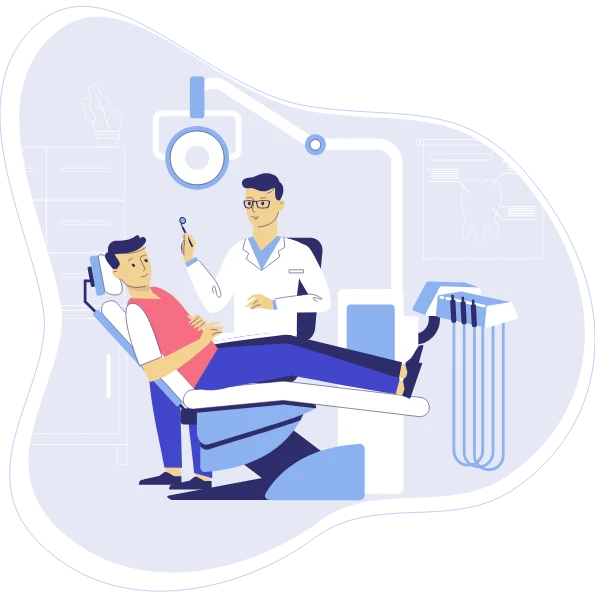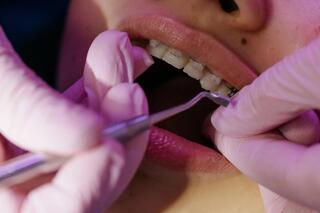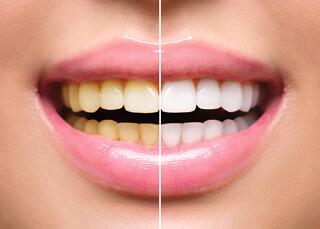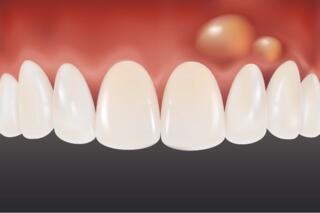Can braces be fitted to the upper jaw only?
Yes, a braces system can be fitted exclusively to the upper teeth. The prerequisite is that the patient's bite is correct, with comfortable jaw closure. The purpose of the procedure is aesthetic, not bite correction.

Indications
- Crowding and misalignment of teeth.
- Gaps between the front teeth.
- Space following tooth extraction.
- One or two teeth are misaligned (e.g., due to dystopia or hyperdontia).
- In preparation for implantation and prosthetic work.
- Misalignment of a molar when there's no opposing tooth on the lower jaw.
It is recommended to install brace systems on both jaws. Why? Wearing an orthodontic appliance only on the upper set of teeth can cause defects in the lower one. The jaws may not close properly. The lower set of teeth could excessively wear down.
How is the decision made on the advisability of treating only one jaw? Based on computer-aided diagnostic data. If the orthodontist is 100% confident in the effectiveness of the correction, a treatment plan is created.
Contraindications
Relative Contraindications
- Bruxism.
- Tooth decay.
- Any illnesses in their acute stage.
- Poor hygiene – presence of tartar.
Absolute Contraindications
- Many teeth missing in a sequence.
- Issues with bone tissue.
- Gum inflammation (periodontitis).
- Uncontrolled diabetes.
- Allergy to the material of the device.
- Immune system disorders.
- One or several implants with crowns have been installed.
Fitting Braces on the Upper Jaw
-
Initial Consultation, Diagnosis
The doctor examines the patient's oral cavity, assesses the position of the teeth, the degree of curvature, and other defects. Conducts a CT scan or panoramic X-ray. Based on the data from the radiological examination, the doctor decides whether treatment of one jaw will be effective. Together with the patient, selects a suitable brace system, develops an individual treatment plan, and takes impressions. -
Preparation
Before affixing the appliance to the upper set of teeth, the dentist treats cavities, gum diseases. Eliminates any source of inflammation in the mouth. Performs professional teeth cleaning. If necessary, may remove a tooth that would hinder the movement of others. -
Installation of Braces
The orthodontist installs an expander, dries and polishes the tooth surface. Glues brackets with slots onto each tooth using dental adhesive. Through the slots, fixes the wire and pulls it to the required position. It connects the locks and exerts pressure on the teeth for their gradual movement. Fixes a brace ring on the molars for additional support of the structure. The entire process usually takes about an hour. -
Correction Process
Every 1-2 months, the doctor activates the brace system – replaces ligatures or the wire. Monitors progress, directs the movement of teeth in the desired direction. Orthodontic treatment typically lasts from 1 to 3 years, depending on the specific situation. -
Post-treatment Support
After the correction, the doctor removes the braces. To maintain the result, recommends wearing retainers (a wire is affixed to the teeth on the tongue side). They should be worn for 1-2 years. If necessary, prescribes a silicone cap to wear during nighttime sleep.
Typically, braces are installed on both jaws. Sometimes, a patient wants to correct a defect only on the upper teeth. However, diagnostics may reveal that the jaws do not close correctly, requiring a full correction. Yet, in some cases, treatment with braces on just one jaw is possible.
Choosing Braces for the Upper Jaw
The choice of braces for the upper jaw depends on your preferences, budget, aesthetic requirements, and your orthodontist's advice.
- Metal braces are the most common and cost-effective option. They are durable and effectively fulfill their function. They are thinner, do not wear down the upper teeth, and are also used for correcting the lower teeth. They are visible when smiling.
- Ceramic braces are a more expensive option that requires more time for correction. They are hypoallergenic, and adaptation to them is quicker. They are less visible on the teeth – providing an aesthetically pleasing look.
- Sapphire braces are the most expensive, requiring more meticulous care and a longer duration of treatment. They are highly aesthetic – practically invisible on the teeth. Bio-compatible, adaptation to the structure is swift.
A combined option is possible – the doctor places ceramic/sapphire on the upper arch and metal on the lower. Or aesthetic braces are installed on the front teeth of the upper row, with metal braces in the side areas.
Indications for Installing Braces on Both Jaws

- Speech problems.
- Facial asymmetry.
- Crowding of teeth on both jaws.
- Incorrect bite (open, deep, crossbite, distal, mesial).
- Large gaps and diastemas (spaces between teeth).
- Incorrect positioning of more than three teeth in one row.
- Dystopia (significant misalignment of individual teeth) in both rows.
- Temporomandibular joint disorders.
Orthodontic treatment with braces on both rows of teeth is considered more comprehensive and effective. After an examination and diagnosis, the orthodontist will recommend what is best for the patient in their situation. And if it is necessary to improve the aesthetics of the teeth row, we will expertly fit braces on the upper jaw, giving you a beautiful smile.
Frequently Asked Questions
Why are braces needed for the upper jaw?
Braces correct the bite, align teeth, and improve the smile.
Is it painful to have braces installed?
There might be some discomfort, but it's usually not very painful.
How long do you need to wear braces?
Typically, from 1 to 3 years, depending on the complexity of the case.
Can you eat hard food with braces?
You should avoid very hard and sticky foods to not damage the braces.
How often do you need to visit the orthodontist during treatment?
Usually, every 4-6 weeks for adjustments and monitoring.
Will pronunciation worsen with braces?
Temporary changes are possible, but they usually resolve quickly.
How do you care for braces?
You need to brush regularly, use special brushes, and mouthwashes.
Can braces cause allergies?
Rarely, but possible if there is sensitivity to the materials of the braces.
What types of braces are available for the upper jaw?
Metal, ceramic, sapphire, lingual, and invisible.





